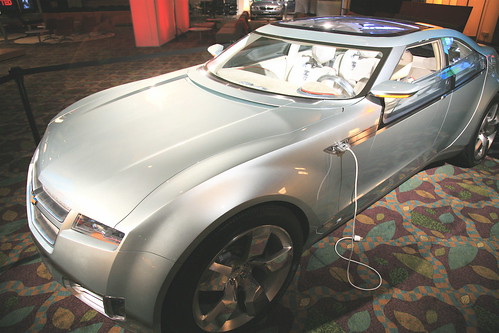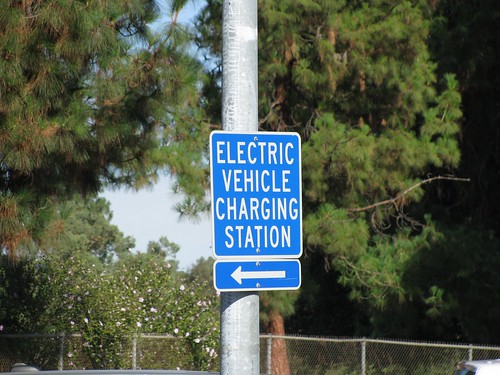(Source: Autobloggreen)
Th!nk details U.S. manufacturing, sales plans: hopes to sell City EV for under $20,000
This morning at the Michigan Information Technology Center in Ann Arbor, Th!nk finally gave the media the details of it’s planned expansion into the U.S. market. The short version: by 2010, Th!nk North America hopes to be building electric vehicles in the U.S. These City models (seen above) will be able to go around 70 mph, pass all required safety standards and be targeted at fleet customers, initially. Th!nk NA will be submitting a loan application to the Department of Energy on March 31, and its U.S. plans are dependent on getting this money. Well, Th!nk officials were hesitant to put a firm number out, but Th!nk CEO Richard Canny said that the price to consumers, after government incentives, would probably be under $20,000, but you’ll need to figure in an $80-90 per month fee to lease the battery. 
Click here to read more about this “North American Invasion” plan.
(Source: TreeHugger)
TH!NK Electric Car Maker Wants to Move to Sweden (or the U.K.)
Norway’s electric vehicle manufacturer TH!NK has a long and troubled history – gone bankrupt twice, changed hands a couple of times (including a short stormy marriage with Ford) and stopped its production line late last year when the economic crisis hit. But TH!NK’s woes are far from over, it seems, as the company’s leaders try a novel idea: an offer to move TH!NK lock, stock and batteries to a nation willing to prop it up until propserity re-appears. The two current contenders? Battered Britain andSlumping Sweden. Sweden may be in the lead, as Saab has tanked, and Swedish King Carl Gustaf has already reportedly purchased two TH!NK electric vehicles – in blue and gold, of course.
Powercircle says move EV production to Sweden
Sweden’s Powercircle told Miljörapporten it is attempting to broker a deal in which TH!NK would move production to two former Saab sites: Trollhättan near Gothenburg and Uddevalla. Thus a EV manufacturing hub could be created, Powercircle says, with just 185 million Swedish crowns in contribution from the government, creating 500 jobs in the short term.
Click here to read more about this “migration” plan.
 Spain’s fourth largest city is getting 75 public electric vehicle recharging stations throughout the city this year. Spain’s ambitious program of introducing EVs, hybrid and plug-in cars (a million units for 2012) is promoting the new network under the Movele program. Seville is getting recharging stations in the most used parking lots in the city, as well as at the airport, city hall offices and other official buildings. The plan includes 500 electric cars, which will be allocated not only to public institutions but for private users as well. It’s expected that each simple recharging post will cost €1,000. The picture shows a recharging post in Lisbon, Portugal.
Spain’s fourth largest city is getting 75 public electric vehicle recharging stations throughout the city this year. Spain’s ambitious program of introducing EVs, hybrid and plug-in cars (a million units for 2012) is promoting the new network under the Movele program. Seville is getting recharging stations in the most used parking lots in the city, as well as at the airport, city hall offices and other official buildings. The plan includes 500 electric cars, which will be allocated not only to public institutions but for private users as well. It’s expected that each simple recharging post will cost €1,000. The picture shows a recharging post in Lisbon, Portugal.








